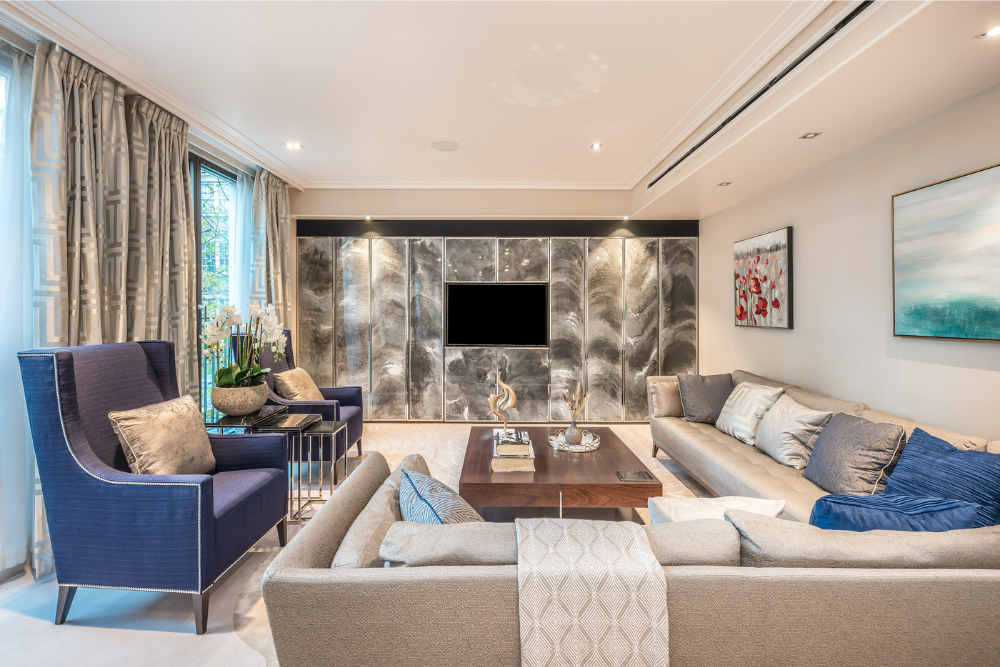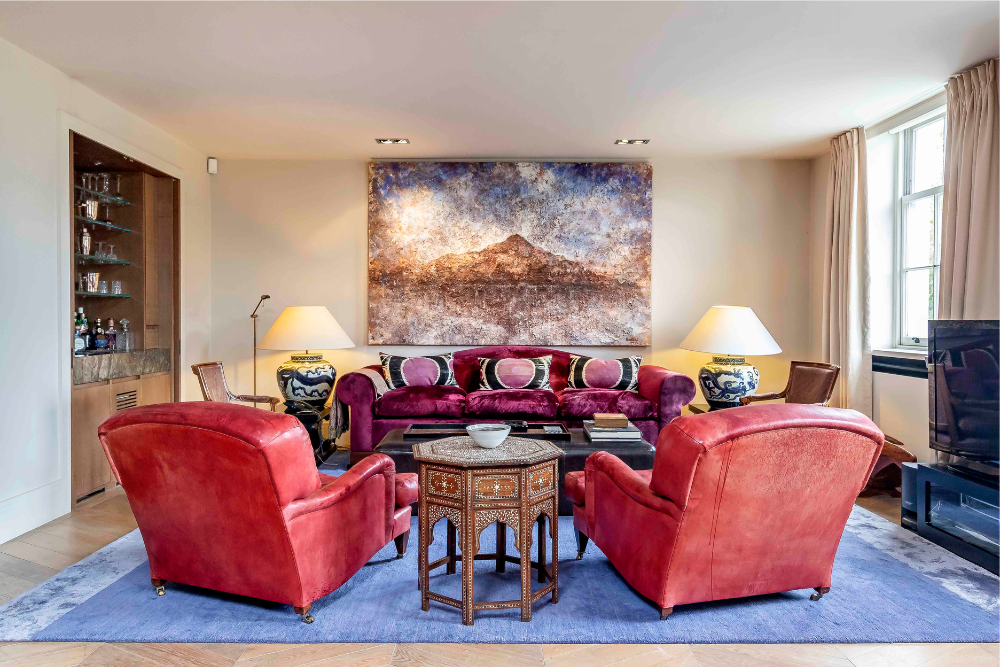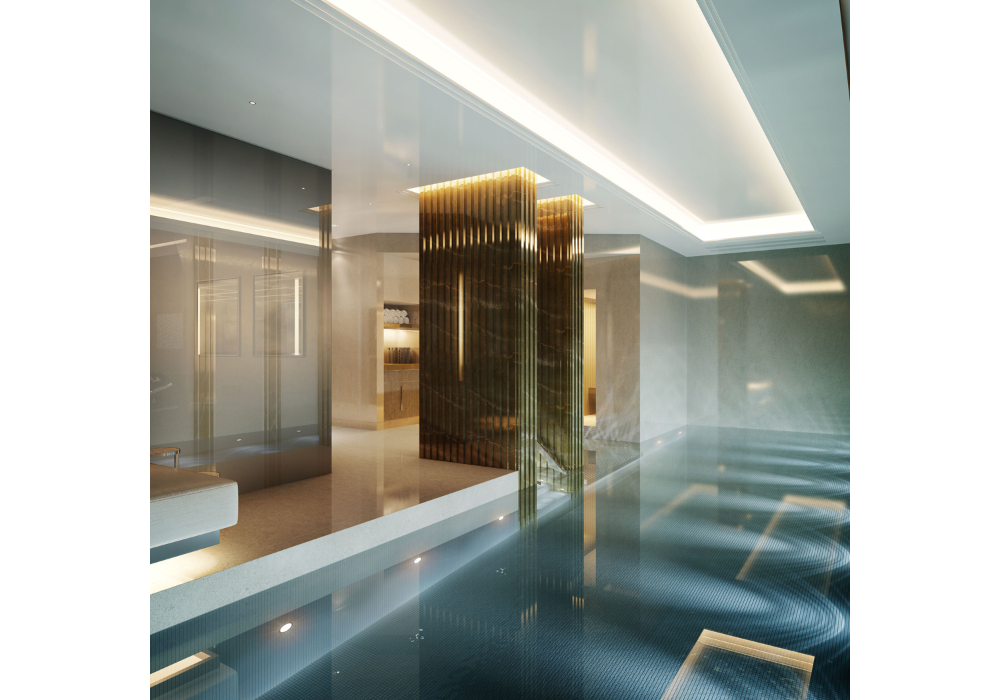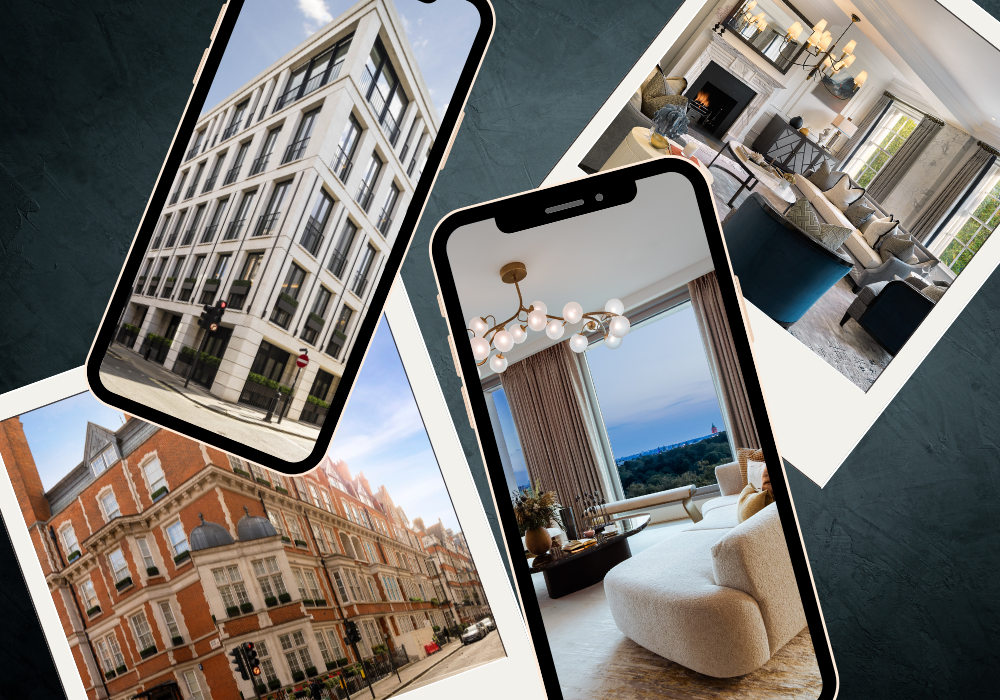
The End Of Historic Mayfair?
21.03.23As a new survey from Mayfair experts, Wetherell, reveals more new, Dubai-Style homes are being built and sold in Mayfair versus the more classic, period homes associated with the area, Abode2 investigates the changing tides with ‘Mayfair Guru’, Peter Wetherell
Mayfair, London’s most famous address, is in a state of radical metamorphosis according to the recent Wetherell 2023 Spring Residential Market Report which reveals last year sales of homes in high-end newly built developments – many offering Dubai-style “seven star” facilities – outstripped those of the traditional period stock, accounting for more than two-thirds of sales.
 Traditional Façade of 47 Grosvenor Square
Traditional Façade of 47 Grosvenor Square
In the £5 million+ category, with a total of just over £793 million of sales in Mayfair during 2022, some £555 million (70%) was made up by new-build homes. The £10 million+ market in Mayfair also saw the dominance of this sector last year: out of a total value of £634.7 million, new homes accounted for more than £505 million (80% of sales).
Wetherell say that the shift from period home sales to new homes reflects a pattern that has been emerging since 2018, when sales of new homes first began to outstrip those of more traditional period housing stock. Prior to 2018 the private sale housing stock in Mayfair was dominated by unmodernised period or refurbished homes, since 2018 the supply of new homes has risen dramatically, with new luxury developments now lining Grosvenor Square and surrounding streets.
Modern Terrace at TheBryanston.
The Wetherell report adds that apartment living in Mayfair across all styles of property, however, has seen a post-Covid resurgence, both in sales volume, values and lets. The Wetherell analysis shows that in 2022 only 7% of sales were houses. Achieved prices for flats have risen by 6% over the last five years: the average price per square foot for a two-bedroom flat was £2,071, for a three-bedder £2,367 per square foot and for a four-bedder-plus, £3,478. The average price per square foot for a house was £2,692.
Wetherell say that three distinct private residential property sectors are thus now emerging in Mayfair, proving that the character of this upscale enclave, traditionally home to royalty, aristocracy, global power players and international billionaires, is anything but immutable.
The first sector, “historic Mayfair”, is comprised of unmodernised homes within elegant Grade I and II listed Georgian townhouses and ornately embellished red-brick Victorian and Edwardian mansion blocks – which are increasingly rare finds.
The second sector, “refurbished Mayfair”, is made up of refurbished period properties, with original facades retained, but interiors modernised for contemporary living.
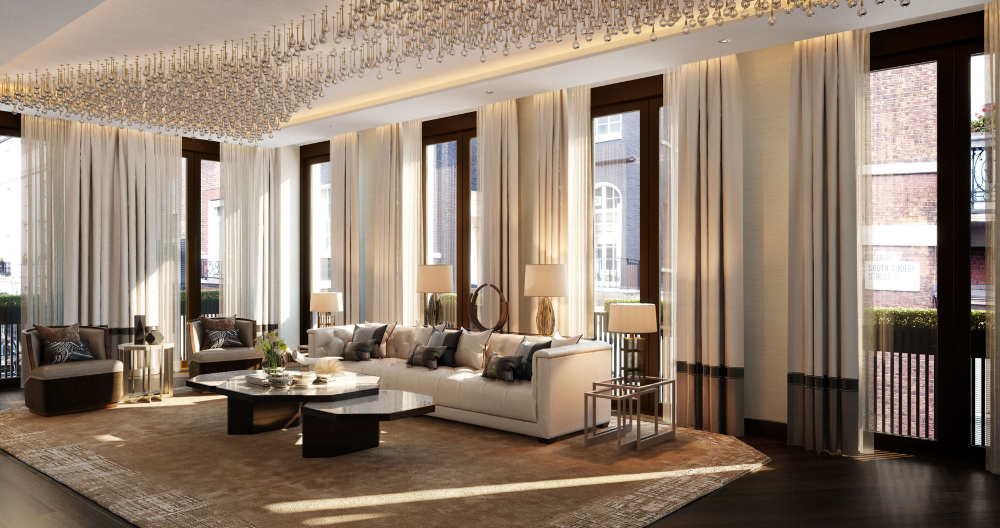 77 Mayfair Contemporary First Floor Drawing Room
77 Mayfair Contemporary First Floor Drawing Room
And now, making up a dominant sector of the sales market, there is “modern Mayfair”, with brand new homes and luxurious serviced residences built behind contemporary facades, or expertly restored period fronts, with high-end hotel-style amenities and services on tap.
“Mayfair has got its mojo back” says Peter Wetherell, Founder and Executive Chairman of Wetherell. “It has always been the best area to live, work and play in London, but as our new survey reveals historic Mayfair has been replaced by a new “modern Mayfair”. Alongside new homes the area now attracts all the A-listers and celebrities and boasts re-imagined flagship hotels, revived luxury retail, new clubs, modern HQ offices and vastly improved public realms, it’s no surprise there has been a huge demand for the area’s new prime residential developments, with all the facilities you could ever want on tap.”
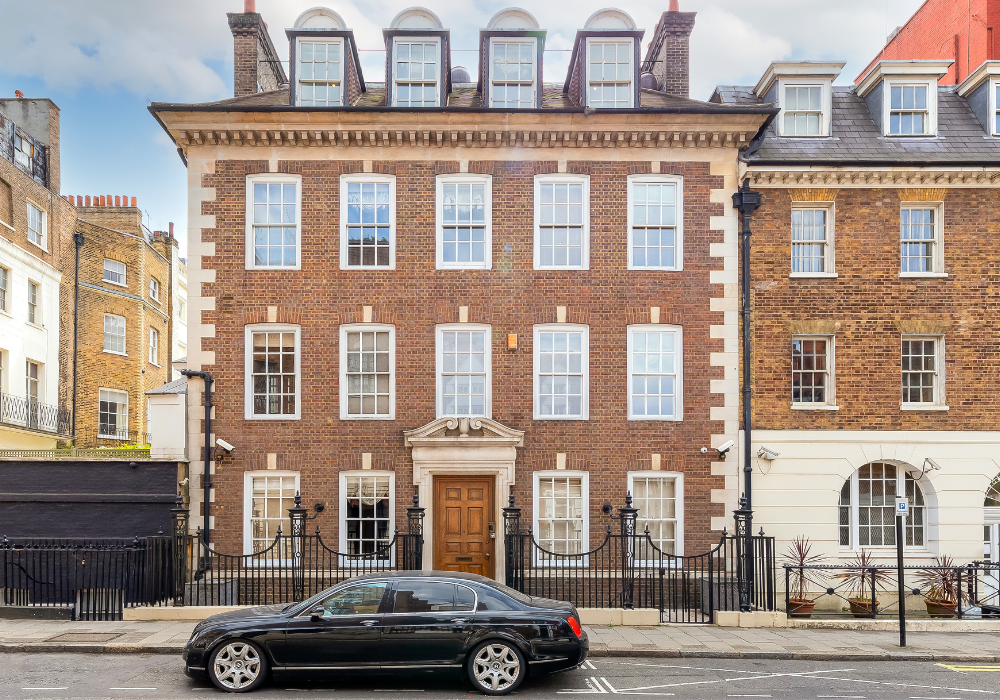 28 South Street Classic Exterior
28 South Street Classic Exterior
Peter Wetherell adds: “Buyers have leapt at a ‘once in a lifetime’ opportunity to be part of a residential development boom not seen in nearly 100 years: a dozen new developments in and around the area are now providing nearly 500 new homes, the housing market in Mayfair has changed beyond all recognition.”
Wetherell says the attractions of Mayfair’s luxurious “Seven Star” developments are self-evident. Branded residences such as Four Seasons at Twenty Grosvenor Square, The Mandarin Oriental in Hanover Square and The Mayfair Park Residences, with direct access to a Dorchester Collection hotel, have brought to the market a world-class standard of finish, facilities and services – think wardrobe valets, masseuses, sommeliers and private jets on call - and are forcing many flagship London hotels to up their games.
The Bryanston, 2 Bedroom Apartment's Living Space
“Well-informed buyers,” says Peter Wetherell, who having worked in the area’s property industry for over 40 years is dubbed the ‘Mayfair Guru’, “are aware that this development boom is finite. It is very much a market of ‘buy now whilst stocks last.”
The Wetherell survey highlights that with sales of many of these new residences now completed, however, and their first occupiers already settled in, there is a burgeoning resales market. In 2023 and beyond, a large proportion of Mayfair’s property deals will now be newly launched refurbished units or new-builds hitting the market again.
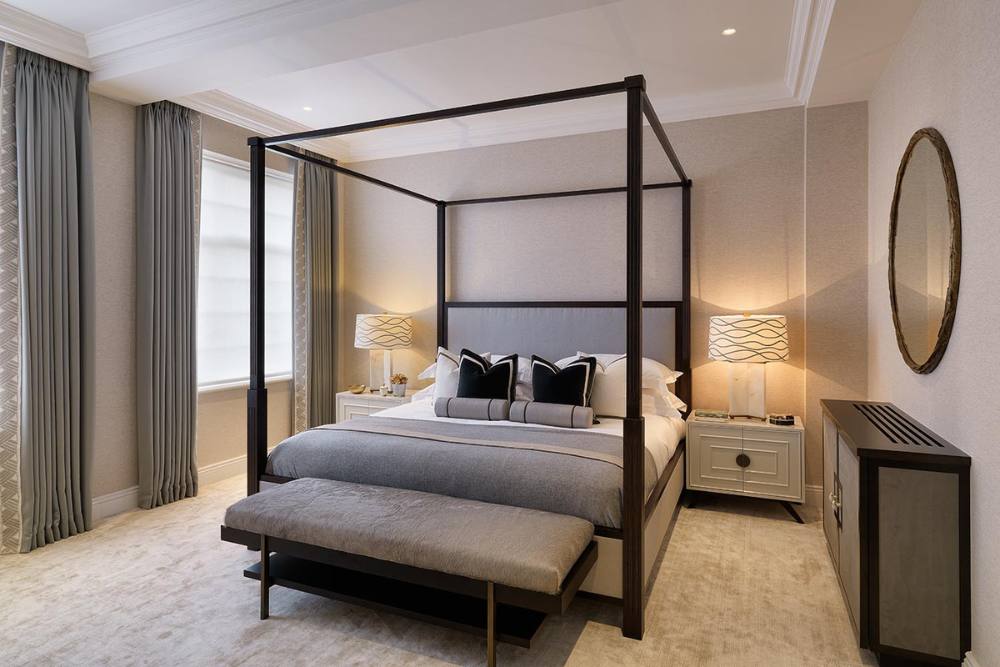 18 Grosvenor Square Timeless Master Bedroom Suite
18 Grosvenor Square Timeless Master Bedroom Suite
“With a diminishing stock of new development apartments, the focus will inevitably turn back to the domestic Mayfair resale market,” Peter Wetherell says. “There will be refurbished and new build resales available, but really discerning buyers should also hunt out sales particulars which say ‘First time on the market for 25 years’, these types of property provide an opportunity to refurbish and modernise, creating the opportunity for an uplift in capital value.’”
To be first in the door of a residence in a lavish new development, however, Wetherell recommends looking to the trophy units in The Bryanston, an 18-storey tiered tower, with Hyde Park views and their own outside space. New landmark address 1 Mayfair, a Neo-Georgian wonder designed by New York starchitect Robert Stern, is now rising out of the ground on the site of a former parking garage. The 29 apartments and townhouses in the £2billion Caudwell development are set to be completed in the summer of 2025. When Stern describes his vision as one “rich in both memory and optimism,” he could well be describing Mayfair itself.
With over half the Mayfair property market in the rental sector, lettings figures, too, are robust. Number crunching by LonRes/Land Registry for Wetherell shows rental values have risen by 14% over the last five years, and now stand at an average of £72 per sq. ft. Last year, the average letting price for a one-bedroom flat per week was £798, a two-bedroom flat £1,481, a three-bedder £3,065 and a house £3,503.
Despite the prestige of being a Mayfair homeowner, it can be advantageous to be a tenant. “Tenants have the advantage of the landlord paying the building’s annual service charges and costs of communal areas,” Peter Wetherell says. “I know one building where just lighting the hallway has recently jumped from £1,500 to £5,000 per annum.”
Wetherell observes that whether you’re a buyer or renter, you’ll find private outdoor space in Mayfair (the West End’s most exclusive neighbourhood, it’s neatly bordered by Hyde Park to the west, Oxford Street to the north, Piccadilly and Green Park to the south and Regent Street to the east) at a premium. Although Mayfair has two main public squares, Grosvenor and Berkeley, Wetherell suggests house-hunting around Mount Street, South Street and South Audley Street. Homes have easy access to a lesser-known public oasis of green space, Mount Street Gardens, but some ground and lower-floor properties also have use of their own exclusive “secret gardens.”
Both devotees of hotel-style new-build living or traditional period proportions can be certain that Mayfair will continue to metamorphose, as it has so many times before. Created in the early 18th century when the Grosvenor family transformed boggy fields into Grosvenor Square, the area soon became a magnet for dukes, earls, viscounts and marquises. By 1850, its aristocratic heyday was over, and Victorian plutocrats moved in, their “new money” replacing the old townhouses with flashy, gilt-adorned mansions. Subsequent decades saw about £2billion-worth (at current values) of residential property ripped down for a boom in commercial space – by 1970, just a third of Mayfair’s stock was residential – before the slow return of residential in the 1990s.
Mayfair Chambers Modern Reception
Its many incarnations mean Mayfair has been home over the centuries to A list names from every sphere. Prime Ministers Benjamin Disraeli, Sir Robert Peel and Sir Winston Churchill have all lived here, and HRH Queen Elizabeth II was born on Bruton Street. Florence Nightingale, classical composer Handel and Jimi Hendrix all have Blue Plaques commemorating their time.
Today, Wetherell says that any trace of the neighbourhood’s fusty, traditional reputation is well and truly of the past, with historic Mayfair replaced by modern Mayfair and the district now a magnet for digital-savvy Millennials, Gen Z’ers and wealthy global nomads, who demand world-class amenities from their swanky new residences, and who want to be in easy walking distance of several Michelin-starred restaurants and the fashionista’s paradise that is Mayfair - 80% of the world’s top retail brands are represented here.
A Traditional Welcome at 5 Grosvenor Square's Reception Room
Most importantly, living here is about being part of the zeitgeist. In a scheme dreamed up by Qatari Diar and British architect Sir David Chipperfield, the Grade II listed former US Embassy on Grosvenor Square will open as the Chancery Rosewood hotel in 2025, with eateries designed by Tristan Auer and Bar Studio. For now, however, on Berkeley Square, rainforest-themed restaurant Amazónico and its sequin- and seashell-studded underground private club are London’s hippest places to be seen.
Wetherell observes that sustainability and place-making are also at the heart of Mayfair’s future success. With a plethora of well-preserved Grade I and Grade II listed buildings, as well as a high content of new mixed-used developments taking care with their carbon footprint, Mayfair, Wetherell says, “is the ultimate sustainable city.” Bond Street station is now the jewel in Europe’s largest infrastructure project, the new Elizabeth Line, and planning has been approved for Grosvenor’s mixed-use development of the South Molton Triangle, a two-acre site that will feature elegant, greener streets and more homes.
The Newly Built 77 Mayfair Swimming Pool Complex
The time, Peter Wetherell says, is now. “Mayfair is currently in a step change of improvements in both value and offerings that in the passage of time will be seen as the next radical paradigm shift. It is what I term ‘The Golden Decade’.”
Abode Affiliates
COPYRIGHT © Abode2 2012-2025






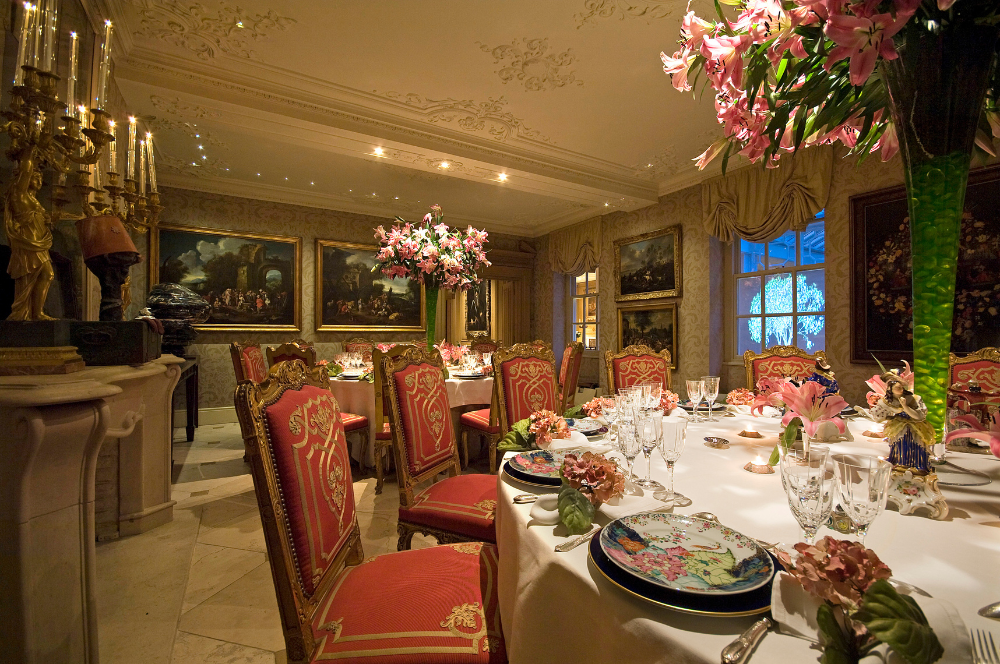 28 South Street Dining Room
28 South Street Dining Room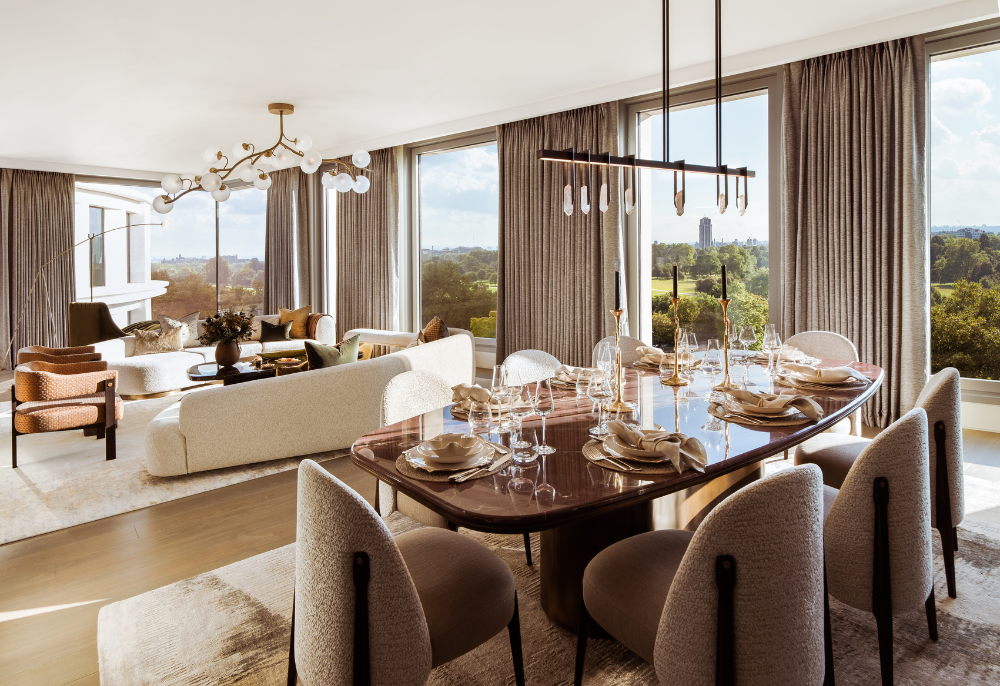

 3 Upper Brook Street
3 Upper Brook Street